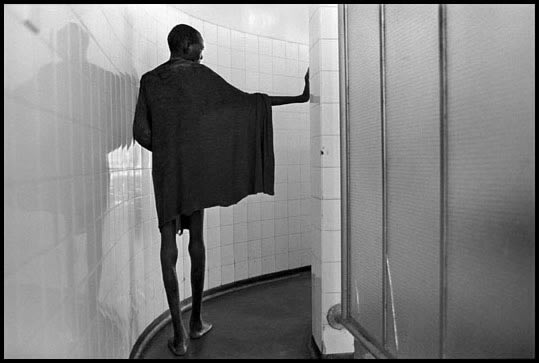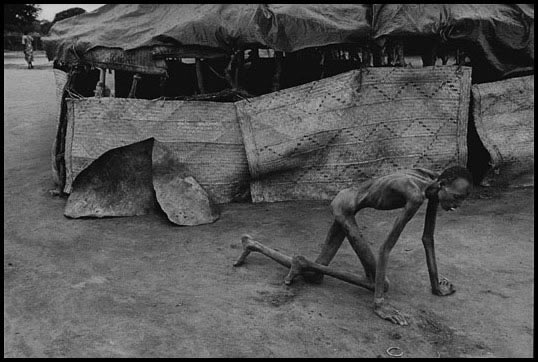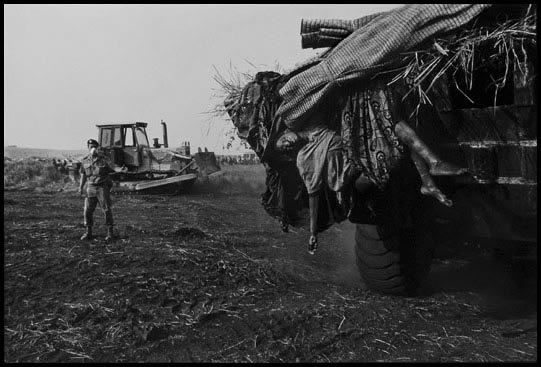"I have been a witness, and these pictures are my testimony. The events I have recorded should not be forgotten and must not be repeated."
This reminded me of the artist statement I wrote for Craft where I stated that if we continue to ignore the issues depicted in these photos, how will they ever be resolved. These scenes need to be documented and set as a constant reminder of our the mistakes of the past, so those mistakes can remain only in the past.
This first image is from a series on AIDS in Africa. It depicts a frightfully skinny man walking the halls of a tuberculosis ward in Zimbabwe. Not only is the subject matter enough to grab the viewer's attention but the strong composition just makes it all the more powerful. The tight space gives a feeling of being trapped as this man is trapped by his disease. The curving pathway creates a sort of interest as to where we are being led. The negative space is being broken down into geometric figures around the figure.
This next image shocked me even more than the last. It depicts a famine victim in Sudan crawling on the ground as he probably does not have the strength to stand. It is easy for any photographer to become so distracted with the subject matter that they forget about the rest of the composition, I don't think that's the case here. Seeing as this situation was obviously not set up the photographer probably had to act fast, making it all the more difficult to gain the intended composition. This photographer was able to act fast while still gaining a powerful composition and depicting the scene he wanted to depict.
This last image depicts Hutu refugees being buried in mass graves after being struck by an outbreak of cholera. What is seen here is the completely inhumane treatment of these people after their death. The bodies are being carried by bulldozers and lumped together in "graves". One body hangs limply from the front of the bulldozer while a man in the background directs the bulldozer. The photographer handles the position of his subjects very well, adding more focus to the body by not depicting the entire bulldozer.
These are the type of images I hope to create some day. Photos that cause the viewers to think about what is going on in the world and make a difference rather than sit comfortably on their couches, getting fat and watching cartoons.



No comments:
Post a Comment